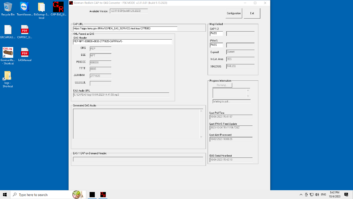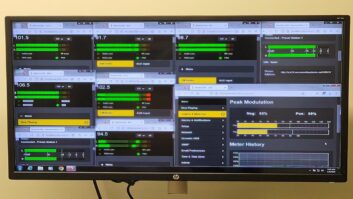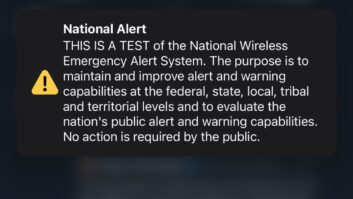In a recent interview in Radio World, Richard Rudman made several claims about “legacy” EAS units and intermediary CAP devices (“In Alerting, Coordination Is Everything,” Jan. 4).
He stated, “Considering the age of first-generation EAS SAME equipment, problems with their power supplies, printers, etc., purchasers of CAP converter devices may have just postponed the inevitable: purchase of a 100-percent CAP-capable box.”
I would like readers to know that Gorman-Redlich stands behind our equipment without putting an end-of-life date on it. For example, we still maintain and repair customers’ weather radios and antenna monitors that we manufactured over 35 years ago and I am confident that this EAS equipment will continue to perform well into the future.
Given the fact that current-generation EAS equipment has numerous printing and logging options and easily serviceable or replaceable external power supplies, this tired rhetoric also has no teeth.
Some people in the trades continue to make claims that intermediary CAP devices will not be able to perform as required; and each time these claims turn out to be false.
First, there were claims that intermediary devices would not be able to handle GMC message (note that these claims came before there was even such a thing as a GMC message). Now that it is confirmed that there will be no such thing as a GMC message, this message falls on deaf ears.
There were claims that intermediary devices would not be able to pass FEMA IPAWS Conformity assessment testing. The Gorman-Redlich CAP-DEC 1 has passed all applicable portions of the testing (including CAP, IPAWS and ECIG) and is listed in the FEMA RKB.
Next, there were claims that intermediary devices would not be able to handle maps associated with CAP messages. There are several problems with this, including the fact that there is no specification for delivering maps or other images in the ECIG or other documentation and, even if there were, there is nothing that would preclude intermediary devices from processing them, as we demonstrate at various trade shows.
Currently, claims are circulating that intermediary devices will not be able to generate the enhanced CAP text required by the ECIG (and, therefore, the fifth FCC Report & Order). As our CAP-DEC has passed conformity assessment, it has also passed testing to determine that it does, in fact, generate both the FCC required text as well as the enhanced CAP text. This text is displayed on the unit’s interface and can be output to character generators, signboards or other devices via USB, RS-232 or other means as needed. Examples of this functionality can be seen in action at the NRB and NAB shows this spring.
As a final note, I would like to add that our CAP-DEC1 “intermediary device” has been connected to the FEMA IPAWS alert feed since it has been online and has correctly received, processed and logged all CAP messages therein. Units that are currently shipping are capable of connecting to the FEMA feed and software updates are available to current customers who have versions from before the FEMA feed came online.
Jim Gorman
President
Gorman-Redlich Mfg. Co.












